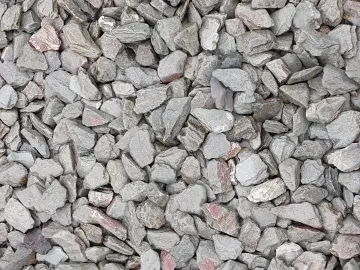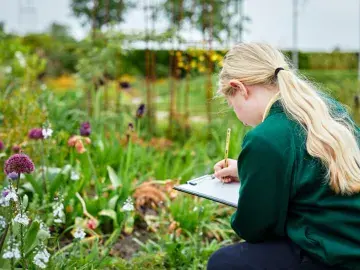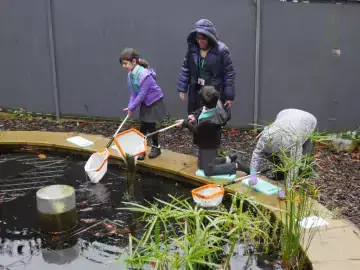
Mapping grass and wildflower habitats
Grass is likely to be one of the main natural habitats on your site. But there is more than one kind of grassland, from lawns and playing fields to wildflower meadows, and some are better for nature than others.
Mapping grass and wildflower habitats is part of the Mapping your site activities, enabling you to explore and map the habitats your site currently offers for nature. Understanding your starting point is really important and will allow you to measure any nature gains you achieve when you start making enhancements to your site. Mapping grass and wildflowers is one of eight habitat mapping sessions in this unit of learning.
Before mapping any grassland habitats, the introductory activities (in the Grass and Wildflowers Worksheet) have been designed to support learners in identifying types of grassland, allowing them to answer the questions in the Grassland Habitat flowchart accurately. These activities can also be used as standalone activities, promoting a positive connection with nature.
You can carry out this activity in spring, summer and autumn.
Getting to know your space
Preparation
Green skills
- identification and ecology
- recording data
- interpreting data
What you need
- Grassland activity sheets (Worksheet, Activity Guide and Flowchart)
- clipboards
- drawing materials
- measuring sticks or 1m x 1m quadrat
- a tablet, laptop, or desktop PC to access the online Habitat Mapper tool
- a printed map of your site, if you do not intend to use the Habitat Mapper outdoors
- optional: examples of grass flowers or seedheads
Location
Outdoors
Useful guidance
Step by step
- Ask learners to work in small groups (three works well) and find areas of grass or wildflowers.
- Using the Grass and Wildflowers Worksheet, ask learners to examine grasses and observe their distinctive characteristics of hollow stems and narrow leaves that wrap the stem. Ask learners if they can find any grass flowers or seedheads.
- Pick a random location in the grass or wildflowers and ask learners to mark out a 1m x 1m area using metre sticks or a quadrat – this is their ‘example area’. For younger children, you could sit them in groups of four, with teddy bear legs out and feet touching, or use a hula hoop.
- Ask the learners to search for as many different leaf shapes as they can find in their example area. Ask them to get close to the ground and part the grass with their hands to spot any tiny plants growing below.
- Ask the learners to decide if the example area is mostly grass, mostly other plants, or a mixture, using the diagrams provided.
- Ask the learners to record a tally of how many different leaf shapes they find in their example area. You could also ask them to draw each leaf shape.
- After completing these activities, learners should use the Grassland Habitat Flowchart to decide which habitat they have.
- On the Habitat Mapper tool, or a printed map of your site, educators and learners work together to draw on these areas of habitat.
- Repeat this for each separate area of grass on your site, as they may be different types of grassland. Continue, until you have mapped all grassland habitats.
- If you used a printed map, transfer it all to the Nature Park map using the Habitat Mapper tool back in the classroom. This is a really important step to ensure your site and your observations are part of national community science research.
- Return to the Mapping your site page and select the next habitat category you have on site.
Reflection
Encourage learners to think about the distinct types of wildlife inhabiting short grass, long grass, or wildflower areas. Consider how interventions, such as allowing portions of grass to grow long or planting wildflowers that attract wildlife, may alter the types of animals and plants present. You could also discuss potential enhancements to the grassland areas on your site, focusing on improvements for both people and nature.
What to try next
Add other habitats to your Nature Park map

Habitats: Mapping ground without plants
Begin activity
Habitats: Mapping flowers and food
Begin activity